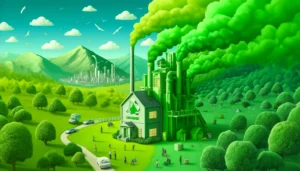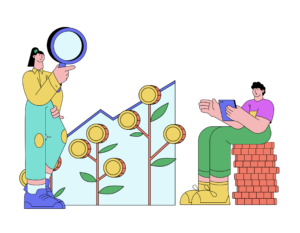As investors seek out meaningful planet saving opportunities that are commercially variable options to accelerate moving to net-zero and more climate resilient outcomes, Natural Capital as a concept and asset class is gaining greater traction among institutional investment managers and governments alike.
As the pace of the global low-carbon transition accelerates, large-scale nature-friendly investment products are emerging. They are designed to provide institutional investors with the opportunity to diversify their investment risk while maintaining commercial, long-term returns
Martin Berg Chief Investment Officer, Nature Based Carbon Strategy
What is Natural Capital
Natural Capital is similar to other forms of capital; financial, built (or physical), human, and social capital, all of which can produce economic outputs. Natural Capital is the world’s stock of natural assets and includes; the rocks and soil beneath our feet, our streams, rivers and oceans, the air, plants, animals and all living things.
From these natural assets, we derive services – ‘ecosystem services’ – which are vital to our health, livelihoods and future. The water we drink, the air we breathe, our land for food production, and forests that help regulate climate and defend against floods are just some examples.
Nature’s contribution to the global economy is estimated to be USD$125 trillion per year, while over 50 percent of the world’s GDP (USD$44 trillion) is moderately or highly dependent on nature and its services. (KPMG demystifying-natural-capital-and-biodiversity)
Despite this, nature is often perceived to be ‘free of charge’ – meaning it is essentially unvalued in all levels of society and decision-making.
The evolution of the Natural Capital concept.
For decades, unsustainable attitudes towards investing, land use and land management have led to climate change, catastrophic declines in biodiversity, and the destruction of nature. (Pollination)
Now, as the race to reverse this trend and as philosophies of value creation shift from extraction to regeneration, there is expected to be a growing investor demand for nature based and nature substituting solutions.
Nature based investments aim to address the climate and biodiversity issues and diversify investment risk, while offering both commercial and long-term returns.
Nature substituting investments aim to replace harmful and intensive nature supported practices (eg agriculture) with technological and bio engineered solutions, again to provide high value commercial returns over the long-term.
The World Economic Forum has recently noted that transitioning three major sectors of the economy onto ‘nature-positive’ paths could create USD $10 trillion of economic growth and 395 million jobs by 2030. The total annual investment necessary to capture all the opportunities across is estimated at about $2.7 trillion. (Weforum)
preservation of biodiversity, sustainable water management and circular use of resources. Apple is directing large allocations of capital to nature-based investments with Conservation International.
Example of Natural Capital Investment themes.
Some example of Natural Capital include;
Sustainable forestry
Sustainable forestry aims to balance the needs of biodiversity and nature whilst recognising the growing global demand for certified sustainable wood products.
Regenerative agriculture
Regenerative agriculture is a system of farming principles and practices that places significant focus on soil health, with attention paid to efficient water management, reducing chemical fertiliser use and harnessing improved biodiversity.
Environmental assets
Climate Asset Management seeks to invest in new and evolving natural capital opportunities – generating income through monetising services provided by nature, such as carbon credits generated from carbon sequestration, improved biodiversity and enhancing local freshwater quality and availability.
In Australia, the Queensland government already pays for nature-based co-benefits through its Land Restoration Fund. Mangrove reforestation, for example, reduces the severity of storm damage, provides breeding grounds for fish species and has been found to be one of the most effective carbon sinks available.
The food reboot
Thanks to breakthroughs in the tried and tested technique of precision fermentation (already used widely to produce animal-free rennet and insulin), food innovators have now unlocked the keys to make animal-free proteins and fats that are biologically identical as those we currently get from cows and other livestock.
The environmental and societal benefits of Natural Capital thesis.
This can be a powerful factor for economic development for the world’s poorest people. According to the World Bank, low-income countries depend on natural capital for 47 percent of their wealth. Natural capital investments can help rebalance world economic power and will empower poorer countries impacted by the climate damaging output of developed nations to increase wealth positively impact the climate crisis.
Considering agriculture and farming; agriculture accounts for a staggering 26% of all greenhouse gas emissions today, with Livestock responsible for 14.5 percent. Changing practices and restoring habitats will have significant impacts on greenhouse gas emissions.
To illustrate how impactful precision fermentation (ferming) can be, analysts project that by 2030, demand for cow products will reduce by 70 percent with similar declines for other livestock products. This fall in demand for conventional animal foodstuffs and products will have powerful knock-on effects with respect to farm equipment, fertilizer use, livestock feed, and the value of farmland. As an example the expected decline in demand for soy, corn, and alfalfa (livestock feed) will decline by 50 percent by 2030. This disruption alone will free up hundreds of millions of acres that could be returned to nature while dramatically reducing water consumption, pollution from fertilizer run-off and greenhouse gas emissions.






